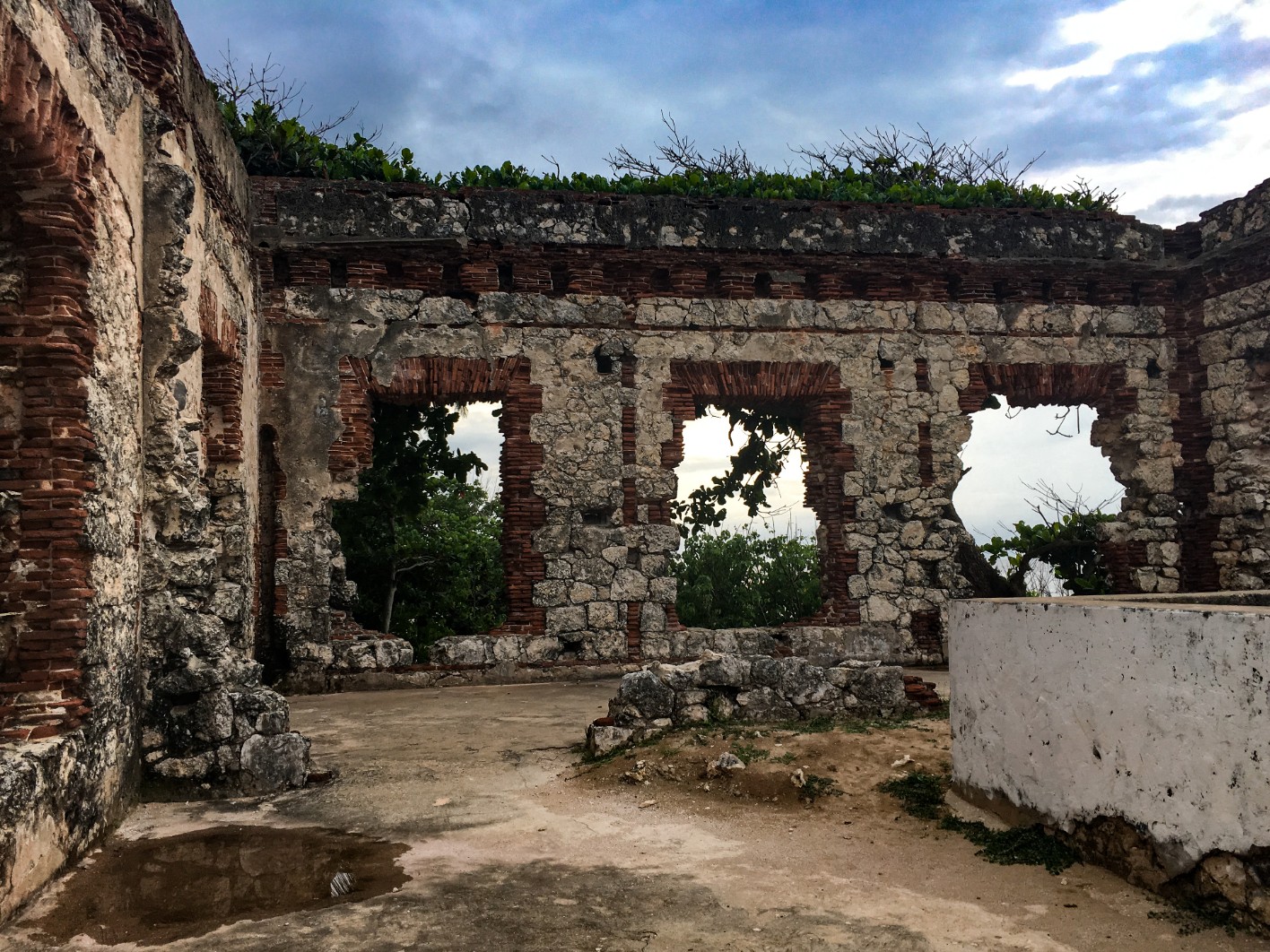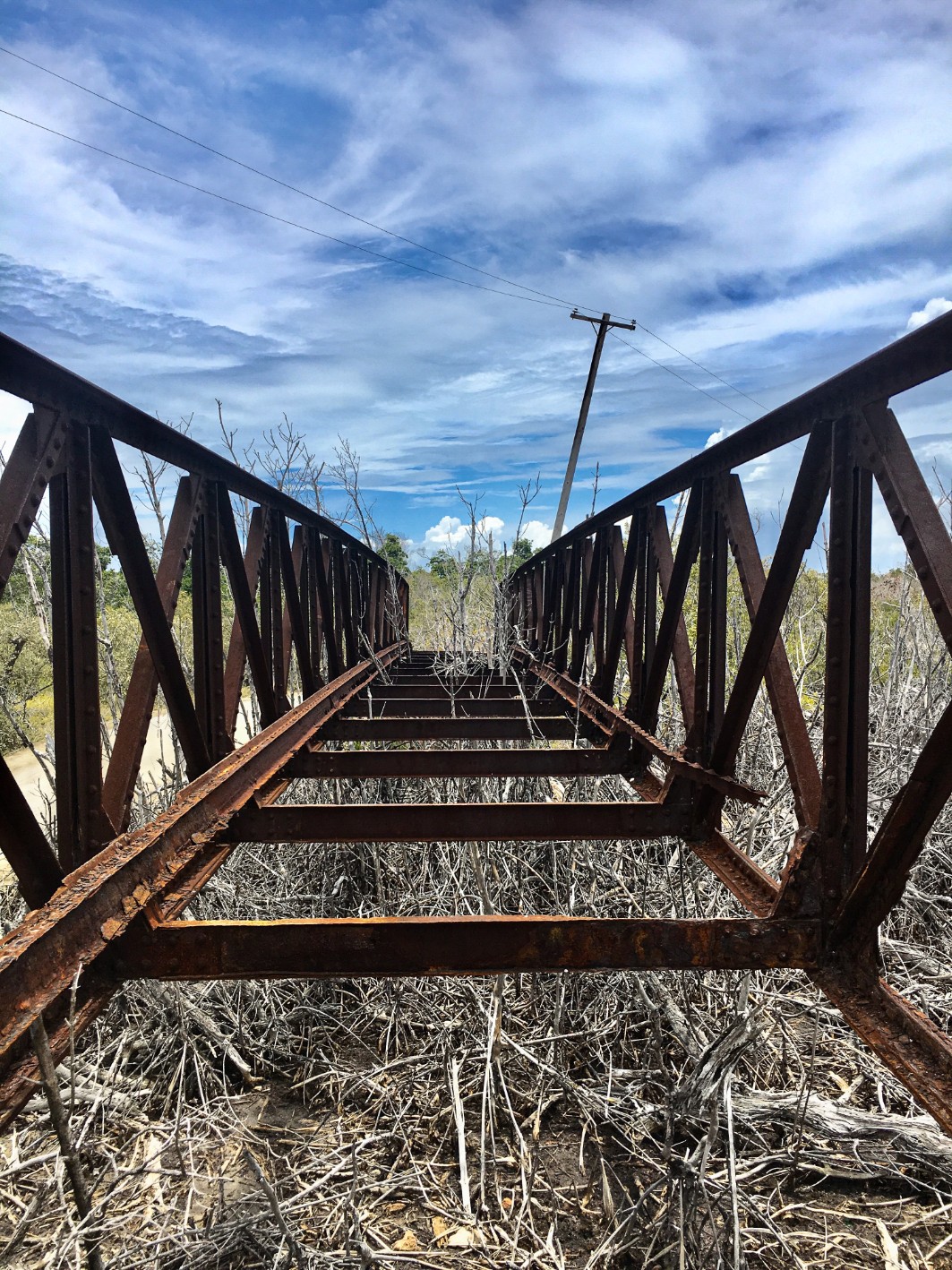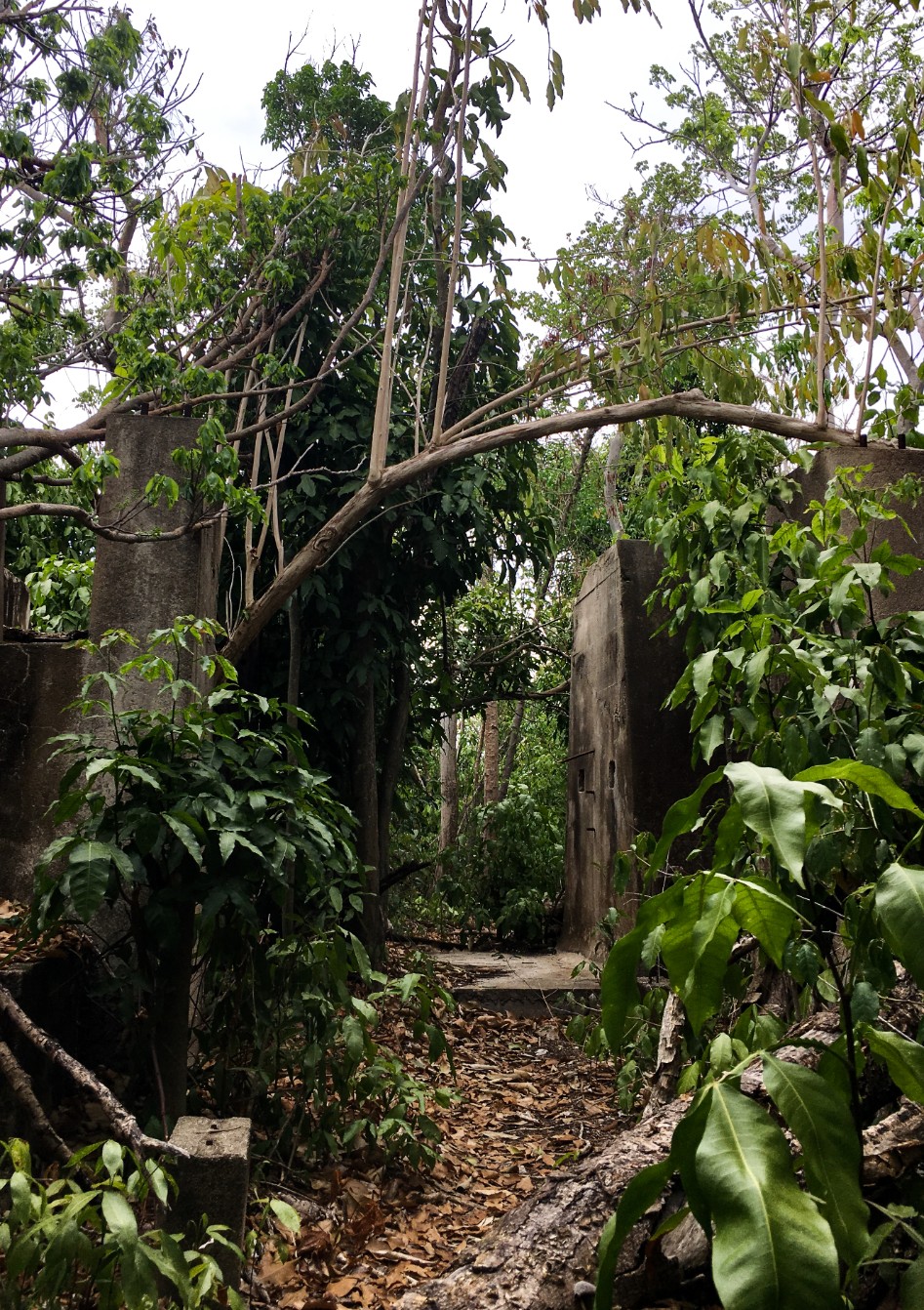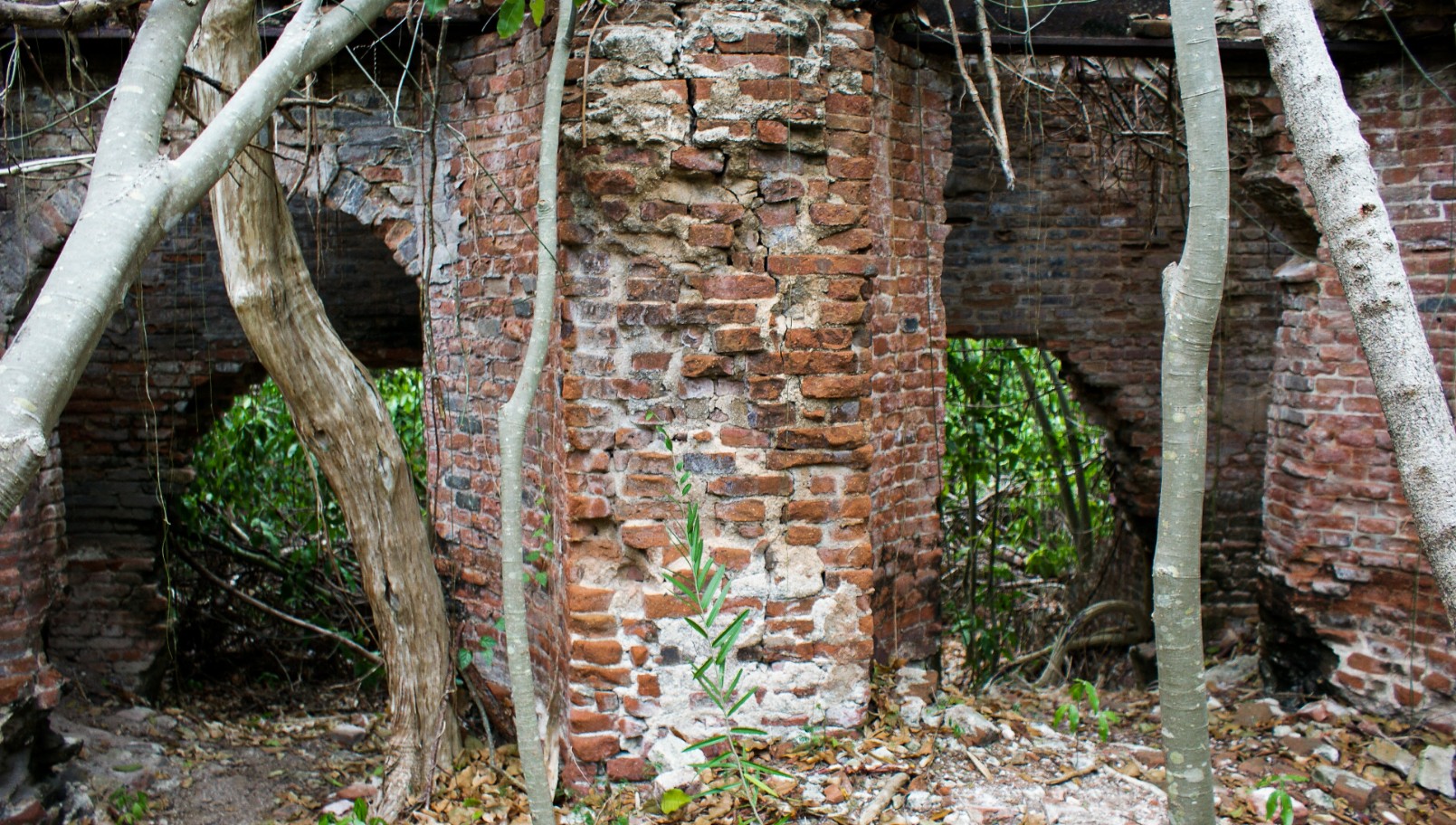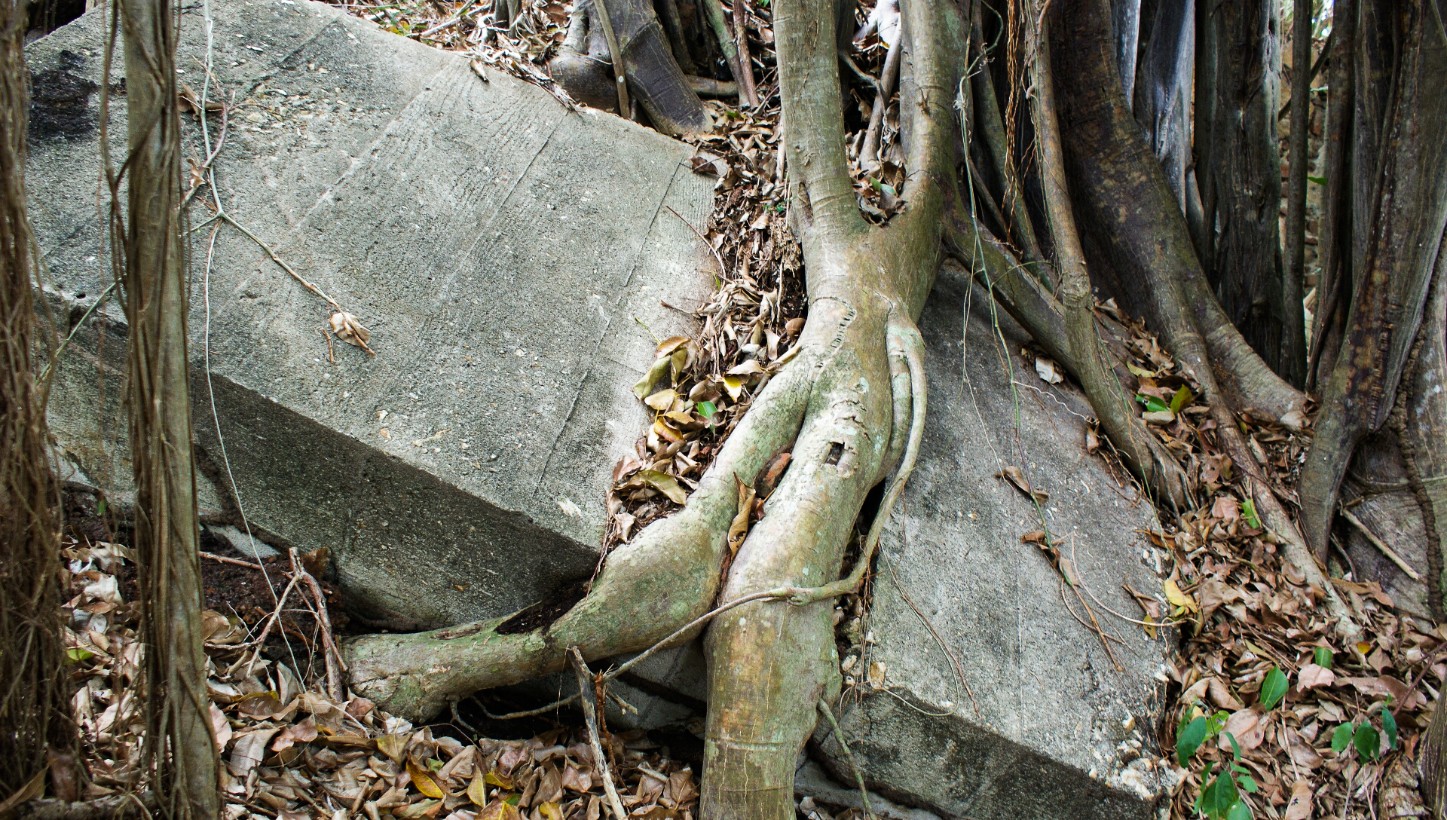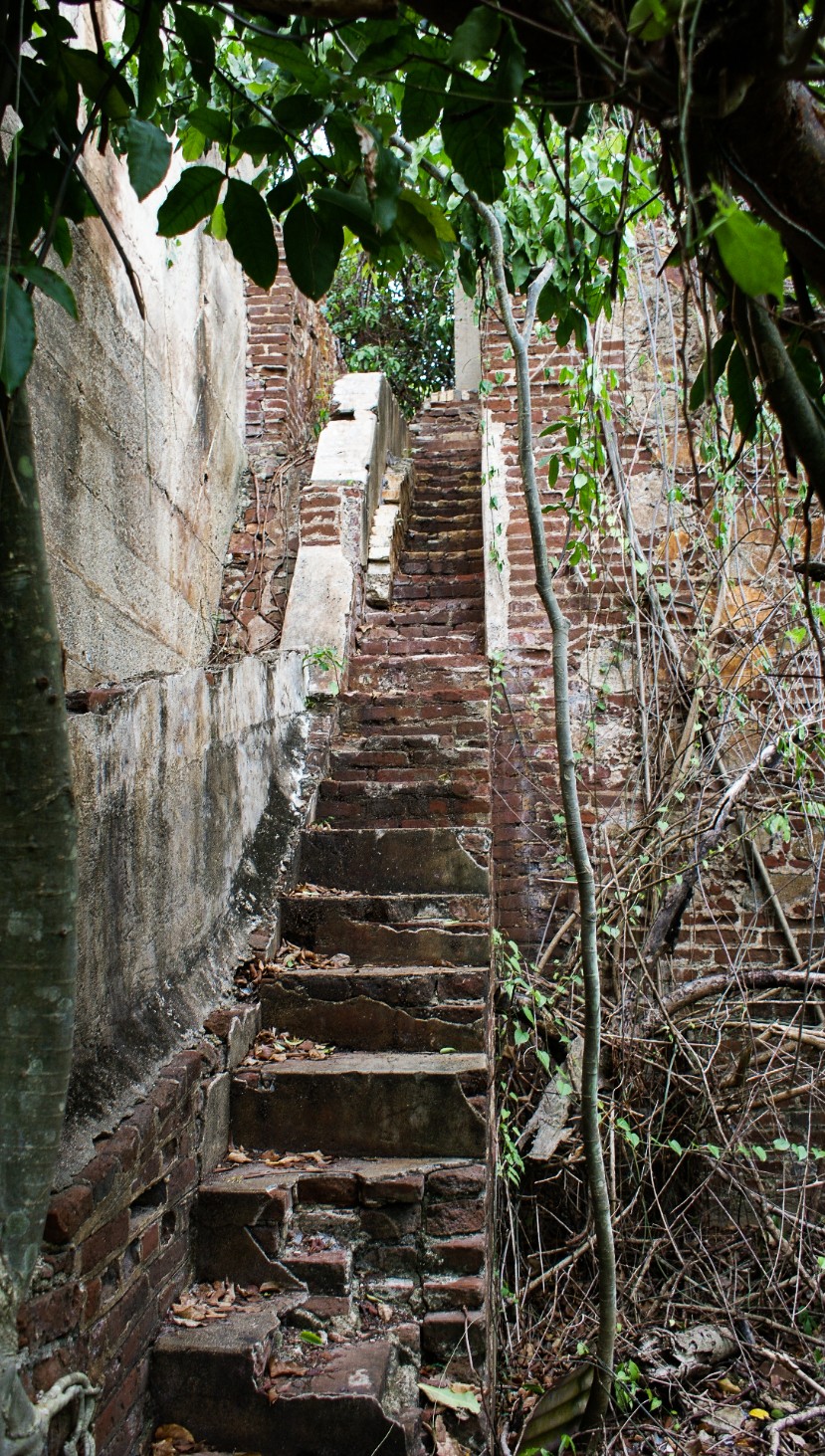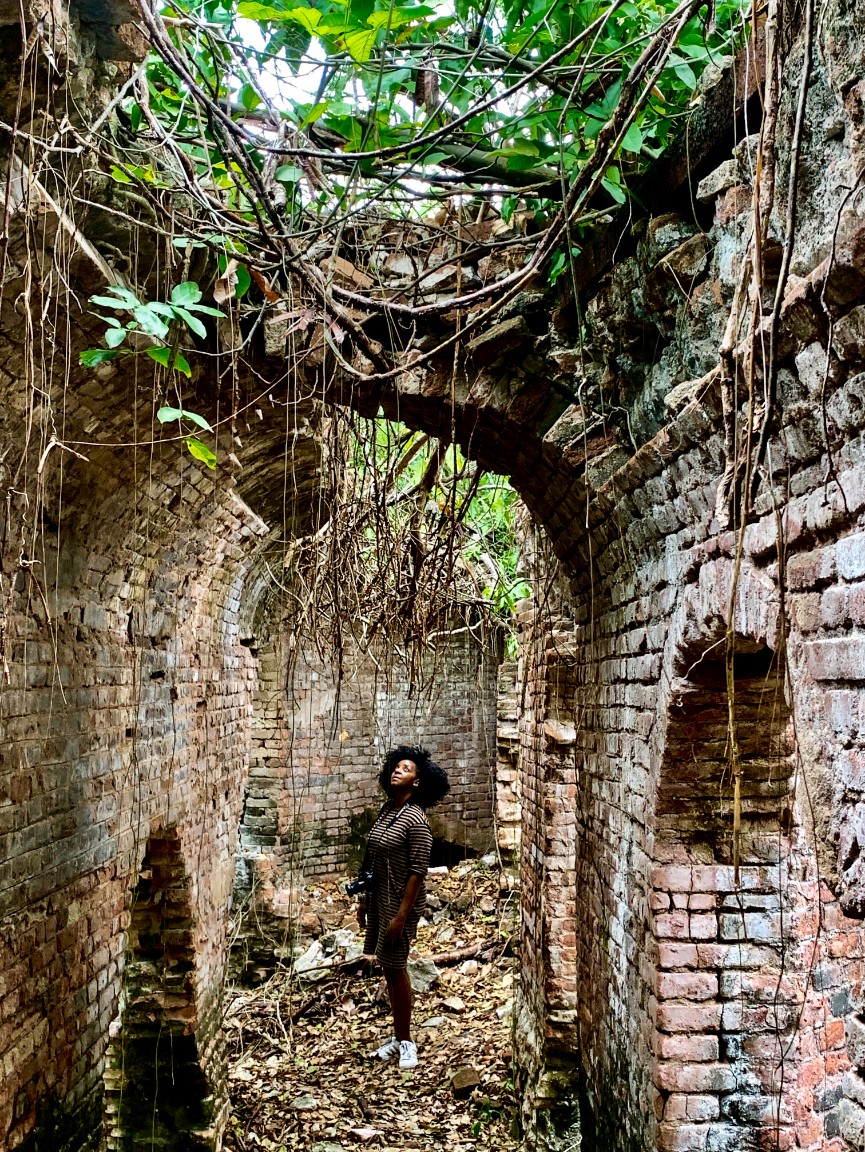/ˈrü ənz/ (n.) From Old French “ruine,” meaning “a collapse.” A contranym, also known as a “Janus word,” named after the Roman two-faced god of beginnings, doors, pathways, gates, transitions, and times.
Ruins are at once a spoiled version of what was, what remains, and the beauty that has crept in and flourishes. Let them lie fallow and the overgrowth is a rebirth. A stillness akin to sleeping in which this lush dream has taken 70 years to uncoil.
Of all of the ruins we’d visited in a weeks’ time, it was in Vieques where I felt the past was still alive. I thought I smelled burnt sugar. “Burnt sugar?” My friend asked, unbelieving. The sugar industry thrived here in Vieques for over a century and closed their doors in the ‘40s. “The mills haven’t been working for decades. I don’t know if that’s what it is,” she said and walked ahead. Twigs snapping, leaves rustling, geckos flitting.
But why can’t our footsteps churn up the past? Isn’t that what soil does when tilled, releasing what’s been trapped inside? And what of our curiosity? What of our digging when we ask and history answers? Isn’t that an act of stirring and setting free?
The past fertilizes new growth and tints the air with charred confection. Old structures collapsed and devastated, broken yet still breathing. The scent of renewal unfurling.
(Photos taken in Puerto Rico: Vieques Sugar Mill Ruins, Salt Flats in Cabo Rojo, Aguadilla Lighthouse)
